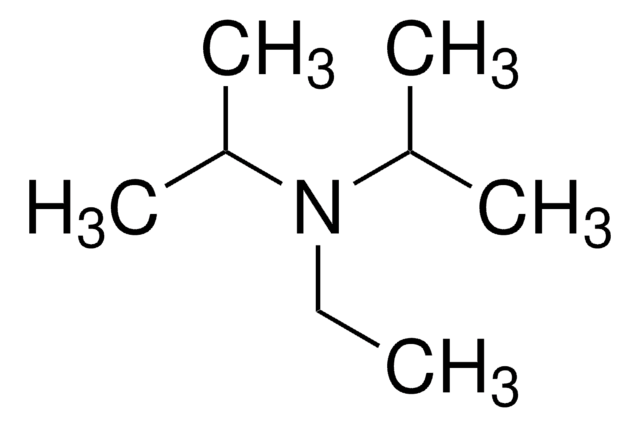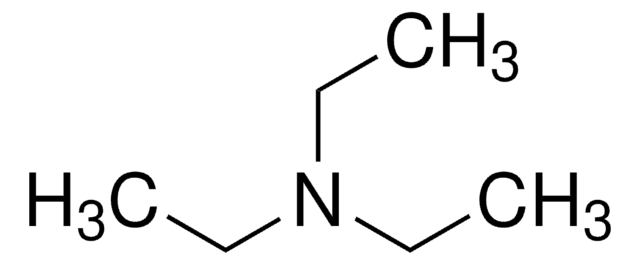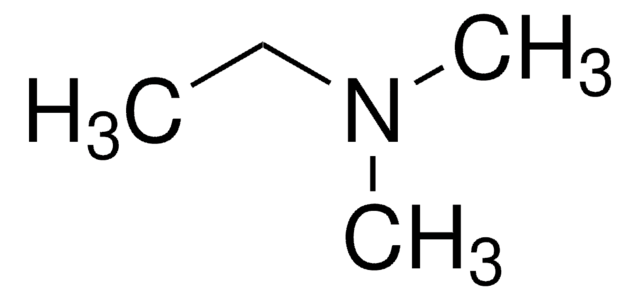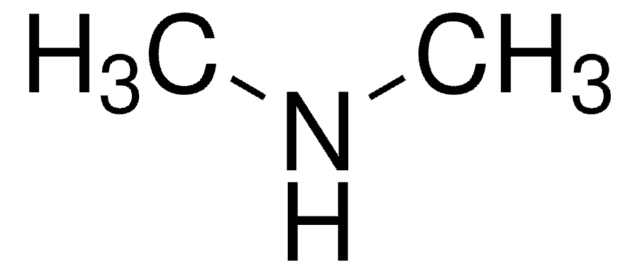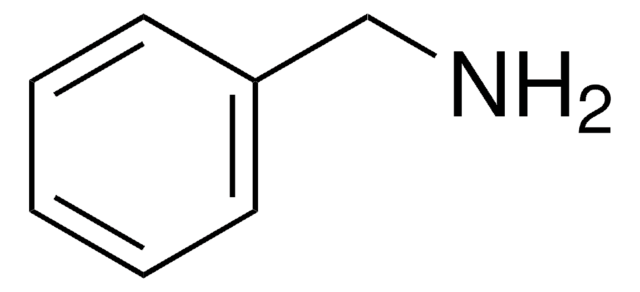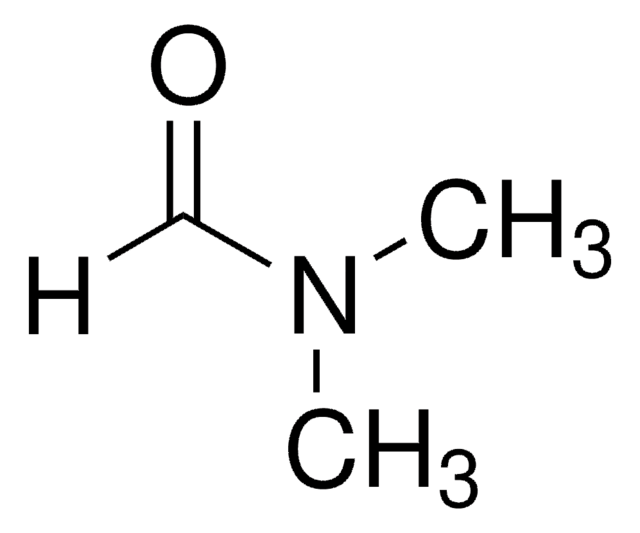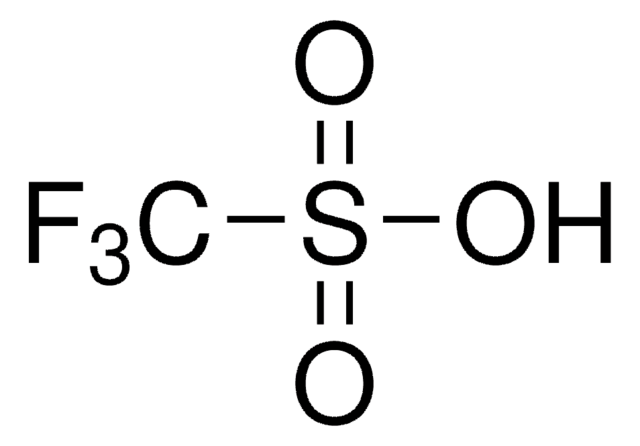Recommended Products
Quality Level
Assay
97%
form
liquid
refractive index
n20/D 1.389 (lit.)
bp
63-65 °C (lit.)
density
0.72 g/mL at 25 °C (lit.)
SMILES string
CCN(C)CC
InChI
1S/C5H13N/c1-4-6(3)5-2/h4-5H2,1-3H3
InChI key
GNVRJGIVDSQCOP-UHFFFAOYSA-N
Looking for similar products? Visit Product Comparison Guide
Related Categories
Application
- N,N-Diethylmethylamine as lineshape standard for NMR above 130 K.: This study explores the use of N,N-Diethylmethylamine as a lineshape standard for nuclear magnetic resonance (NMR) spectroscopy at temperatures above 130 K, providing insights into its applications in high-precision NMR analysis (Fritzsching et al., 2018).
Signal Word
Danger
Hazard Statements
Precautionary Statements
Hazard Classifications
Acute Tox. 3 Oral - Acute Tox. 4 Inhalation - Eye Dam. 1 - Flam. Liq. 2 - Skin Corr. 1B
WGK
WGK 2
Flash Point(F)
closed cup
Flash Point(C)
closed cup
Personal Protective Equipment
Regulatory Information
Certificates of Analysis (COA)
Search for Certificates of Analysis (COA) by entering the products Lot/Batch Number. Lot and Batch Numbers can be found on a product’s label following the words ‘Lot’ or ‘Batch’.
Already Own This Product?
Find documentation for the products that you have recently purchased in the Document Library.
Our team of scientists has experience in all areas of research including Life Science, Material Science, Chemical Synthesis, Chromatography, Analytical and many others.
Contact Technical Service